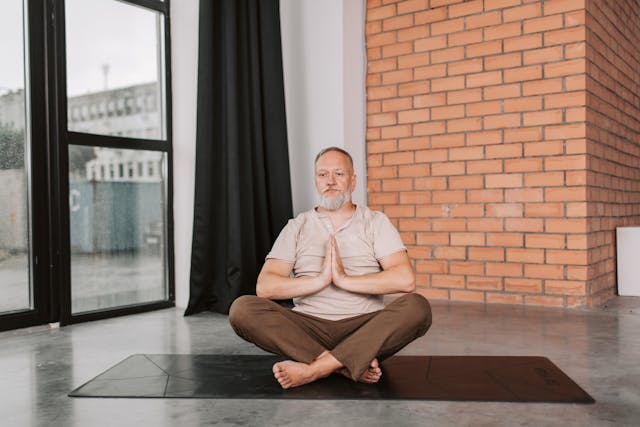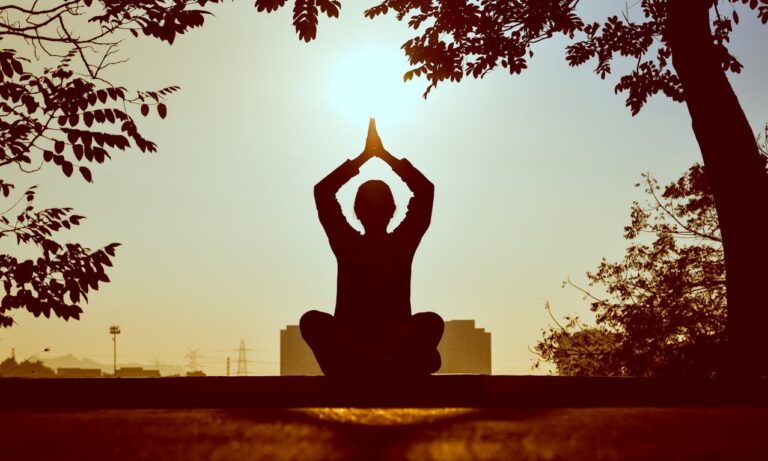In today’s fast-paced world, where deadlines loom, and daily pressures mount, the quest for tranquility often feels like chasing a mirage. Yet, nestled within the ancient practice of meditation lies a powerful antidote to one of modern life’s most silent adversaries: high blood pressure. Imagine trading in your worries for moments of peace while simultaneously empowering your heart and mind. In this blog post, we’ll explore how embracing mindfulness can transform stress into serenity, leading to lower blood pressure and a richer, more vibrant life. Join us as we dive into the science behind meditation and uncover practical tips to help you stress less and live more.
Understanding Blood Pressure
 Before we dive into how meditation works, it’s essential to understand a bit about blood pressure. Blood pressure is the force of blood against the walls of your arteries as your heart pumps it around your body. When this pressure is consistently too high, it can lead to serious health problems, like heart disease and stroke. High blood pressure (or hypertension) can be caused by a variety of factors, including stress, poor diet, lack of exercise, and even genetics.
Before we dive into how meditation works, it’s essential to understand a bit about blood pressure. Blood pressure is the force of blood against the walls of your arteries as your heart pumps it around your body. When this pressure is consistently too high, it can lead to serious health problems, like heart disease and stroke. High blood pressure (or hypertension) can be caused by a variety of factors, including stress, poor diet, lack of exercise, and even genetics.
While medication can help manage high blood pressure, lifestyle changes like diet and exercise are often recommended as part of a holistic approach. Meditation is one of those lifestyle changes that can make a big difference over time.
How Meditation Helps Lower Blood Pressure
The key to meditation’s impact on blood pressure lies in its ability to reduce stress. When stressed, your body activates its “fight or flight” response, releasing hormones like cortisol and adrenaline. These hormones cause your heart rate to increase and your blood vessels to constrict, both of which contribute to higher blood pressure. Meditation, on the other hand, helps activate the parasympathetic nervous system, often called the “rest and digest” system. This system promotes relaxation and helps counteract the physical effects of stress. When you meditate, your body enters a state of deep relaxation, which leads to slower breathing, a reduction in heart rate, and, ultimately, a drop in blood pressure. Several studies have shown that mindfulness meditation, in particular, can lead to noticeable reductions in both systolic (the top number) and diastolic (the bottom number) blood pressure. Even just a few minutes a day can make a big difference, especially when combined with other healthy habits. Sound Healing Bali recommends that in addition to regular meditation, you should also make an effort to eat a healthy diet, exercise regularly, and get enough sleep in order to maintain a healthy blood pressure.

The Science Behind It
So, what does the science say? A study published in the Journal of Alternative and Complementary Medicine found that mindfulness meditation can significantly lower blood pressure in people with high blood pressure. Another study in the Hypertension Journal demonstrated that meditation helps reduce blood pressure by improving the body’s ability to regulate the stress response. One of the most commonly studied forms of meditation for blood pressure reduction is mindfulness-based stress reduction (MBSR). This technique encourages focusing on the present moment, which can help to decrease anxiety and the overall feeling of stress that many people experience in their daily lives. Over time, MBSR helps to create a more balanced, calm state of mind, which leads to better cardiovascular health.
Meditation is a simple, natural way to reduce blood pressure and improve heart health. By practicing mindfulness and relaxation techniques, you can help your body manage stress more effectively, which in turn helps keep your blood pressure in check. The best part? You don’t need much time or experience to start seeing benefits. Whether through deep breathing, mindfulness meditation, or guided sessions, taking a few minutes each day to meditate can be a powerful tool for your overall well-being.…



 Despite rumors to the contrary, HGH injections do not lead to abnormal bone growth. According to research, people with a growth hormone deficiency may experience slow bone formation or delayed puberty due to their condition. However, no evidence taking HGH will cause your bones to grow abnormally. This type of injection might actually help you build stronger bones, as HGH may stimulate the production of collagen and other elements necessary for healthy bones.
Despite rumors to the contrary, HGH injections do not lead to abnormal bone growth. According to research, people with a growth hormone deficiency may experience slow bone formation or delayed puberty due to their condition. However, no evidence taking HGH will cause your bones to grow abnormally. This type of injection might actually help you build stronger bones, as HGH may stimulate the production of collagen and other elements necessary for healthy bones. Up until the 1980s, HGH was made by extracting it from the pituitary glands of dead human brains. That was true. However, this is not how HGH injections are made now – in fact, these days, there’s a synthetic version available on the market called somatropin. Somatropin is just as effective at promoting muscle growth and fat loss as the natural form of HGH. So what’s the bottom line? Instead of believing these myths, make sure you understand the facts and that you take them in accordance with your doctor’s instructions to avoid any potential side effects.
Up until the 1980s, HGH was made by extracting it from the pituitary glands of dead human brains. That was true. However, this is not how HGH injections are made now – in fact, these days, there’s a synthetic version available on the market called somatropin. Somatropin is just as effective at promoting muscle growth and fat loss as the natural form of HGH. So what’s the bottom line? Instead of believing these myths, make sure you understand the facts and that you take them in accordance with your doctor’s instructions to avoid any potential side effects.